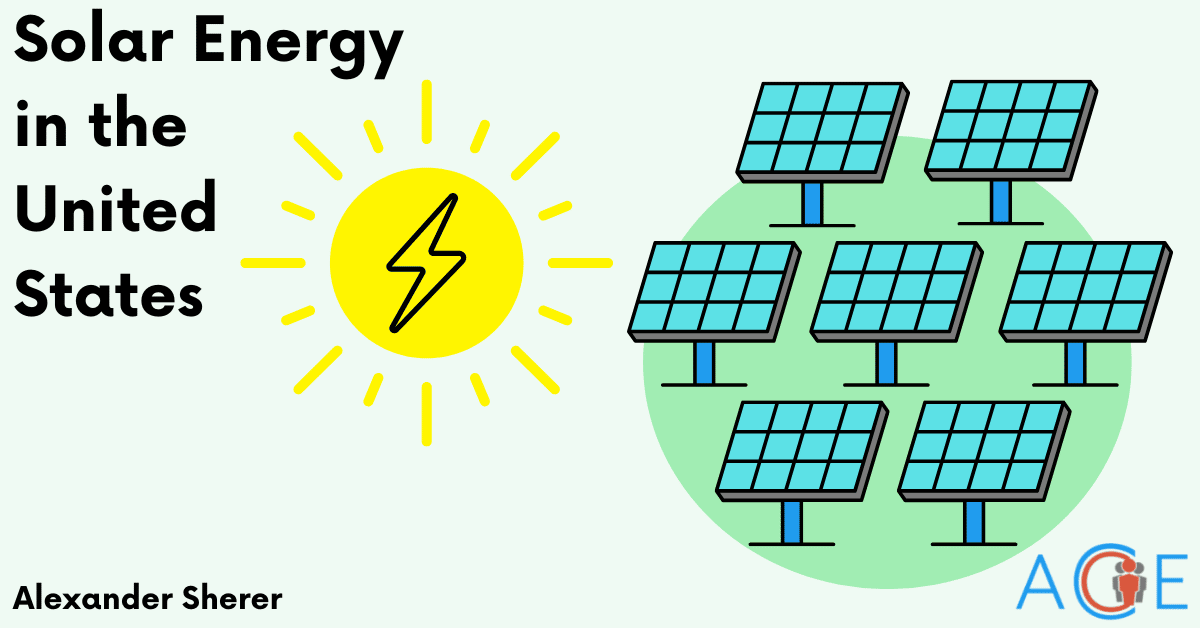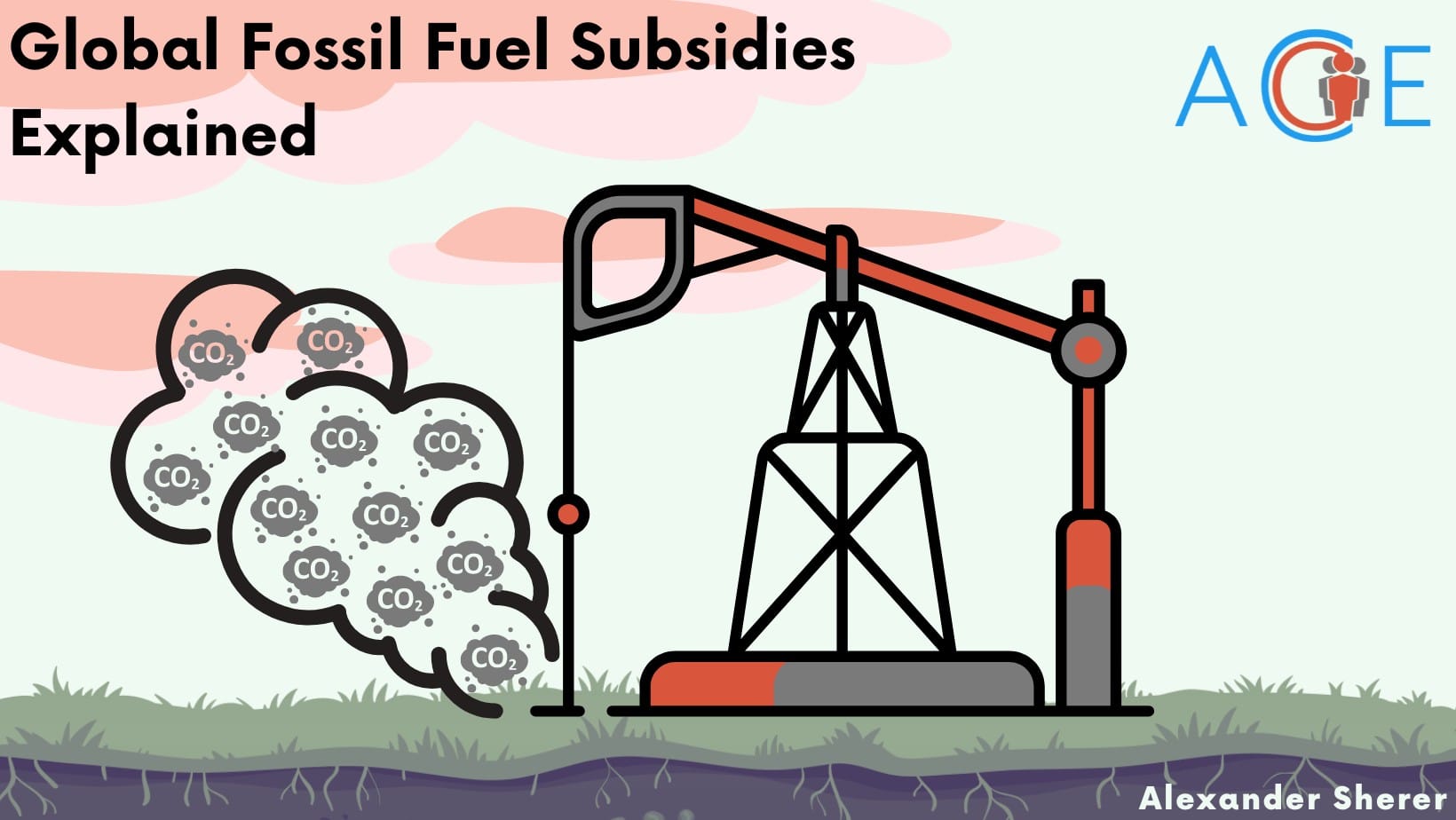Carbon dioxide is a colorless, odorless gas released during the combustion of fossil fuels. As the Sun’s radiation hits Earth’s surface and warms it, much of it is re-radiated back into space as heat. Carbon dioxide in the atmosphere traps heat in the atmosphere, preventing it from leaching into space. This is called the greenhouse effect, and it causes Earth’s temperature to rise. While some other gasses have greater warming potential than carbon dioxide, carbon dioxide is released the most as a byproduct of human activity, accounting for 79% of U.S. emissions in 2020.
As the most prevalent greenhouse gas, carbon dioxide is often the focus of policies to cut emissions, and as such is being incorporated into the economic system. Treating carbon as a financial cost is seen as one method of restructuring the global economy to rely less on burning fossil fuels and seek lower cost alternatives, namely renewables that do not emit greenhouse gasses.
Key Terms
- Social cost of carbon: The present value in dollars of the future damage caused by each unit of carbon emissions, calculated using models that project population and economic growth, as well as disasters and health impacts from climate change, over several hundred years — currently estimated by the U.S. government to be $51/ton of CO2
- Carbon pricing: A method of quantifying costs paid by the public for carbon emissions — in the form of damages to property and health caused by rapid climate change — and assigning a dollar value to each unit of carbon emitted.
- Carbon tax: Money collected by a government per quantity of carbon emitted.
- Emissions Trading System (cap-and-trade): Limits total carbon emissions to a set level, and allows emitters to buy and sell emissions credits with each other where the total amount of credits in circulation equals the set limit.
Social Cost of Carbon
Carbon emissions can be assigned a price because they have costs that can be quantified. Climate change due to increased carbon dioxide emissions has a wide range of impacts, including extreme weather events, droughts, damage to structures, and injury or death related to heat, flooding, storms, and increased spread of tropical diseases. These impacts can be translated into dollar value costs, which are factored into the complex economic models used to price carbon. The modeling arrives at a dollar value that can be used to assess carbon-emitting actions: the social cost of carbon.
Due to the complexity—and ultimately the impossibility—of calculating an exact cost per unit of carbon, estimates vary widely. One meta-analysis finds social costs of carbon estimates ranging from -$50 to $8752/ton of CO2. Across U.S. federal agencies, the social cost of carbon currently used is near the lower end of estimates at $51/ton of CO2. Notably, this number is a reinstatement of a 2017 calculation by the federal Interagency Working Group (IWG), which stated in its report that this is an underestimate that does not reflect more recent scientific developments. For example, New York State estimates the cost at $125/ton. The IWG is currently working to reassess the social cost of carbon.
If an exact social cost of carbon cannot be determined, then what is its use? Its purpose is to provide a tool for estimating the damages associated with carbon emissions, and to give a reference point for potential carbon taxes or Emissions Trading Systems (ETS). Nations can ultimately calculate a cost of carbon informed by their own values—deciding the “cost” of losing lives due to climate induced disasters becomes more of a value judgment than a simple, quantifiable metric.
The social cost of carbon is not without controversy in U.S. politics, with conservatives often questioning its use and liberals being in favor of using it more often. The Obama administration was the first to implement a social cost of carbon at $51/ton, which was then devalued to $1-$7/ton by the Trump administration, in addition to disbanding the IWG. The Biden administration has restored the IWG and its past estimate, however a recent legal campaign by Republican-led states sought to block the Biden administration from reinstating the $51/ton metric from the Obama era, but failed in the Supreme Court.
Carbon Pricing Policies
Many governments have chosen to implement policies that enact carbon pricing that seek to lower emissions by making them expensive. In other words this uses the market to incentivize companies to stop emitting, as opposed to simply mandating emissions to be reduced. By assigning a cost paid for carbon emissions, policymakers hope that companies will try to reduce their carbon footprint as a means to cut costs and maximize profits. The two main policy mechanisms deployed are carbon taxes and ETS.
- Carbon Taxes: Carbon taxes are a method of pricing carbon and making emitters pay for it by assigning a value to each ton of carbon emitted, and collecting taxes based on this value, multiplied by total emissions. Companies are given the choice of paying for their emissions or avoiding the tax by reducing emissions, and the underlying logic is that a more expensive tax will result in more emissions reductions.
- Emissions Trading Systems (ETS): Emissions trading systems, also called cap-and-trade programs, are an alternative way of making emitters pay for carbon by setting a limit on cumulative emissions (a cap) and allowing companies to trade emissions allowances with each other, where the total value of all allowances in circulation is equal to the total carbon limit set by the government. This is different from a carbon tax in that carbon taxes do not set a limit, they merely make emitters pay a flat rate per unit of carbon. These systems allow for a more flexible market-based approach, as heavier emitters can buy allowances from less polluting industries and decide whether it is more cost effective to pay for allowances or simply decrease their emissions. ETS where the government gives away allowances for free also especially rewards companies that can lower emissions, because they can sell their allocated allowances to other companies and earn money. A few other key elements of such a system include heavy fines for exceeding allotted emissions, to make it more viable to pay for additional allowances or reduce emissions, and distributing allowances directly (giving them to industries based on their projected emission requirements) or through auctions that let companies bid for allowances as they see fit.
Carbon Pricing Debates
Even when all parties agree that climate change is a serious issue, there are disagreements over the implementation of solutions, including pricing carbon to reduce emissions.
Those in favor of implementing carbon pricing claim that it is the most effective way of quickly reducing carbon emissions which is a necessary action to prevent catastrophic planetary warming. The World Bank and the International Monetary Fund both support it as a market based strategy to meet emissions reduction targets. Proponents also estimate that a government imposed price on carbon would generate significant revenues for the government, enough to cover the costs of implementing carbon prices. The Tax Foundation projects that a carbon tax of $50/metric ton at an annual growth rate of 5% would generate $1.87 trillion over ten years. They explain that the economic impacts depend on how the tax revenue is spent; if the excess revenue is distributed to workers through tax cuts or direct rebates, it can offset the inherent regressiveness of a carbon tax.
A drawback of carbon pricing, and a major barrier to its implementation, is that a rise in fossil fuel prices negatively affects the economy. The UK’s National Institute for Economic and Social Research calculates that an abrupt implementation of a carbon tax set at $100/ton would raise inflation and lower Gross Domestic Product by 1-2% across most Organization for Economic Co-operation and Development (OECD) countries. The inherent problem is that most economies still rely heavily on fossil fuels, so raising the cost of carbon emissions drives up prices across all sectors. This can affect the poorest citizens the most, and the poorest countries as well, where fossil fuels are essential for light, heat, and transportation. Fears over economy-wide price increases are why carbon taxes are generally politically toxic, despite economists claims that they are the most effective measure for reducing emissions.
Another issue commonly discussed with carbon pricing schemes, and most climate change plans for that matter, is that they rely on international cooperation to be successful. If one country implements carbon pricing, industrial practices may shift to other countries with no carbon pricing, leading to no change in net emissions—a phenomenon known as carbon leakage. For this reason, one of the major policies discussed by global institutions like the IMF has been an international carbon price floor, which would set minimum carbon prices globally and require the involvement of most countries to be effective. Another potential solution being tested in the European Union is deploying a Carbon Border Adjustment Mechanism, that aims to charge equivalent fees on carbon emissions for all goods, including imports, once factoring in any potential carbon emissions paid for in countries of origin.
As it stands, carbon pricing schemes have not been implemented at the international level, but many countries have some form of carbon price. As of 2022, carbon pricing covers 23% of global greenhouse gas emissions according to a report by the World Bank. Global carbon pricing revenue in 2021 was $84 billion.



